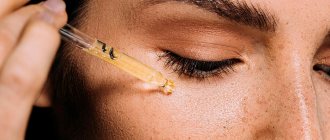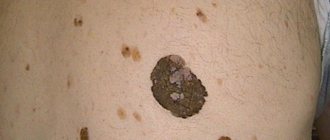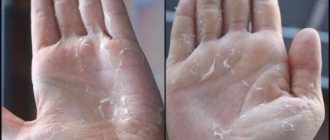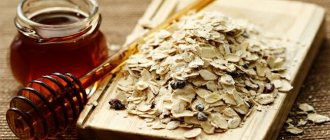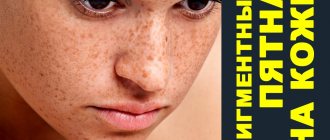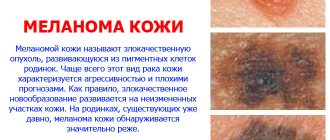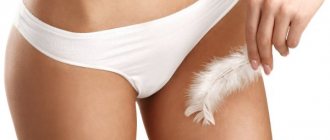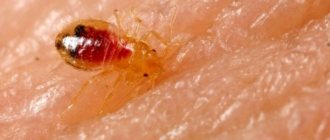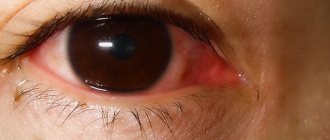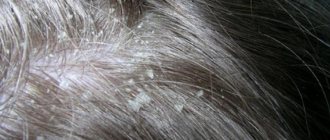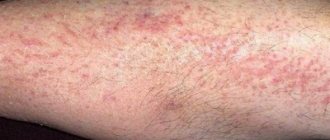In the first part of the article, we looked at non-inflamed types of acne and some effective ways to correctly eliminate aesthetic defects. Today we will talk about inflamed acne. These brothers are capable of quite a strong influence on the beauty of our face, building a whole colony of pimples there.
Causes of inflammation
A disease that was caused by a chemical, physical or biological allergen is called dermatitis. This disease primarily indicates that there are internal disorders in the body.
to the development of the inflammatory process :
Allergic reaction. The body's response to irritants can manifest itself through irritation of the upper layer of the epithelium. In such cases, the skin becomes covered with a small rash, which doctors call diathesis. If treatment is not started in time, diathesis can develop into a more advanced form - eczema. Allergies can be caused by medications, chemicals, food, decorative cosmetics, wool and dust.- Infections. Viruses, fungi, bacteria and staphylococci can provoke redness and inflammation. Such parasites can lead to the development of herpes, erythema and boils.
- Thermal influence. Under the influence of weather factors, the skin can get frostbite or sunburn.
- Mechanical impact. Inflammation can be caused by low-quality decorative cosmetics or cosmetics that do not match your skin type.
- Hormonal disbalance. Problems with hormones can be caused by frequent stress, poor diet and alcohol abuse. Because of this, immunity decreases and the skin becomes more vulnerable.
- Genetic conditioning. Diseases such as seborrheic, atopic and herpetiform dermatitis can be inherited.
The doctor prescribes treatment only after determining the cause of the disease. If the rash appears as a result of poor diet, bad habits and stress, then you can cope with the disease on your own. In case of more severe forms of the disease, only a specialist can help, otherwise the situation can only worsen.
Mycoses
This group includes diseases caused by pathogenic fungi. Lichen versicolor is a skin inflammation that almost everyone has had to deal with. The characteristic pink spots may spread throughout the body. As the pathological process progresses, the affected areas begin to peel and itch. The causes of the disease have not been studied to date. However, it was discovered that pathogenic fungi are easily transmitted through household contact. The risk of developing unpleasant symptoms increases in patients with weakened immune systems.
Ringworm is easily transmitted through household contacts
Common skin diseases also include candidiasis. The pathological process is caused by yeast-like fungi.
We advise you to read: Ointment for fungal skin diseases
Pathogenic microflora can affect all tissues of the body, with the exception of hair. Unpleasant symptoms in the form of itchy red rashes can be detected on the mucous membrane of the mouth, armpits, stomach, face, etc. Candidiasis is often diagnosed in the genital area and anus.
For diseases of this kind, antifungal agents are necessarily used. At an early stage, creams or ointments are sufficient.
Complicated forms of mycoses require systemic treatment. Tablets and injection solutions may be prescribed.
Drug therapy
Drug treatment is prescribed only if the disease has become severe. In case of severe inflammation on the face, treatment is carried out with the following drugs:
- ointment with antibacterial effect;
- vitamins;
- antibiotics in tablet form;
- Activated carbon;
- antiseptic drugs;
- ointments with antibiotics that are locally prescribed.
To achieve the desired result, you should approach treatment comprehensively. Therapy should be aimed at reducing swelling, relieving the inflammatory process, and restoring the functions of the dermis.
Cosmetic procedures
The salon offers a variety of cosmetic procedures that are aimed not only at providing a superficial effect, but also at treating red inflammation on the face. This method of therapy requires large financial investments, but after such procedures the skin will gradually begin to recover.
Salon specialists offer the following procedures:
- Ultrasonic facial cleansing. Such waves affect the skin at the cellular level, they help normalize blood circulation and restore damaged cells. Facial cleansing also activates metabolic processes in the body.
- Peeling. This procedure can be either chemical or mechanical. This procedure is done only if the rash is minor. By peeling, you can get rid of the keratinized layer of the epidermis.
- Laser cleaning. Due to the fact that infrared rays penetrate directly into the subcutaneous layers of fat, they destroy dead cells.
- Mesotherapy. The mixture of biologically active additives used for injection is selected purely individually. The drug is injected directly under the skin, so the effect of this procedure occurs very quickly.
- Ozone therapy. This procedure helps strengthen the immune system and also saturates the skin cells with oxygen. Ozone therapy can reduce the number of facial wrinkles and also improves complexion. The therapeutic effect is that red inflammation on the face is relieved, and the skin becomes elastic and smooth.
- Cryotherapy. This procedure involves treatment at low temperatures. Due to the fact that the skin is exposed to extreme conditions, it begins to activate all its reserve reserves.
Therapy with salon procedures should be carried out under the supervision of a dermatologist, since each procedure has its own indications and contraindications .
Folk remedies
To treat rashes during hormonal imbalance during adolescence or during pregnancy, you can use folk remedies such as ice cubes, masks and rubs.
Ice cubes
To prepare such a folk remedy, grind parsley in a blender. At 2 tbsp. l. For greens, take a glass of boiling water. Leave the mixture for 2 hours. Next, you should strain it and pour it into ice molds. The cubes will freeze in the freezer within a day . You need to use this product every morning. Try to wipe the skin carefully so as not to damage the inflamed areas of the skin. If the rash is very severe, a slight burning sensation may occur.
Anti-inflammatory face masks
It is very easy to prepare such a remedy at home, since you only need those products that you have in your kitchen. To prepare the mask, you will need peeled and grated potatoes, which should be mixed with beaten raw egg yolk. Add 1 tbsp to the resulting mass. l. lemon juice.
Before applying the mask, you can add a little copper sulfate to it (at the tip of a knife). You don’t need to keep this mask on your face for long, about 15-20 minutes. It is recommended to rinse with prepared water - take 100 ml of freshly squeezed lemon juice per 1 liter of water. This procedure should be done at intervals of 1-2 days.
Disinfectant
To prepare such a mask, take 1 tsp. white cosmetic clay (can be purchased at any pharmacy) and mix with talcum powder. Pour warm low-fat kefir or milk into the mixture. The mass should be creamy. This mask is a good antiseptic . It should be kept on your face for 10-15 minutes. This procedure should be carried out 2-3 times a week.
Antibacterial mask
The instructions for preparing and using such a mask are as follows:
- Take a few ripe cherries and peel them.
- Grind the cherries into a puree, add a little starch.
- Apply the resulting thick mixture to your face.
- Keep the mask on for half an hour.
To get a noticeable effect, the mask should be done twice a week.
Lotions
This home procedure involves the use of essential oils. They relieve inflammation well and also have an antibacterial and disinfectant effect. It is important to remember that essential oil can only be applied to clean skin.
To prepare the lotion, dissolve 2-3 drops of any oil in 1 tsp. filtered water. Lotions should only be applied to inflamed areas of the skin. It is recommended to carry out this procedure 2-3 times a day for a week.
Home remedies help fight only small inflammations; to see the effect of the procedures , you should use one of the above recipes .
Treatment of dermatitis
Step one is diagnosing the disease and eliminating the provoking factor. The material for diagnosis is blood, skin scrapings and scales taken from the affected areas. Treatment includes oral medications and topical medications.
Local therapy consists of treating areas of inflammation with antibacterial drugs, fucorcin, and potassium permanganate. The use of products that accelerate skin regeneration processes is indicated. Chronic forms of the process are treated with drugs containing corticosteroids; for acute forms, aniline dyes are used. In case of allergic dermatitis and toxidermia, the allergen that provokes the process is eliminated.
The complex of therapeutic actions includes:
- diet, drinking plenty of fluids while taking laxatives and diuretics,
- desensitizing therapy, including the use of antihistamines, vitamin complexes, and blood transfusions.
For dermatitis, the established cause of which is pancreatic dysfunction, enzyme replacement therapy is performed.
“Herbalists” and “Healers” are replete with folk remedies for skin inflammation. The use of traditional methods is possible after consultation with a dermatologist.
Birch buds are used as a homemade lotion; calendula flowers, strings, cucumber, potato, and pumpkin juice are suitable to soothe itching and relieve inflammation.
To heal wounds and accelerate recovery processes, the skin is wiped with a mixture of propolis and sea buckthorn oil. Sage, St. John's wort, and cinquefoil cope with the signs of dermatitis. With the help of herbs, more than one patient suffering from skin inflammation was cured.
Care for inflamed skin
To get rid of this disease, you should choose the right skin care. Try not to touch the inflamed area of the epidermis. It is forbidden to squeeze out blackheads, pimples and ulcers on your own, as this can easily cause infection. Mechanical cleaning can only be carried out in salon conditions.
Once again, do not injure the irritated epidermis with scrubs. Use special gels for problem skin. It is better to avoid hot baths and washing with hot water . You should wash your face with water at room temperature . Some experts recommend washing your face with still mineral water.
Instead of water, you can use various decoctions or infusions of medicinal herbs. Infusions of string, St. John's wort, chamomile, parsley and calendula relieve inflammation well. At 2 tbsp. l. herbs should be taken 2 tbsp. boiling water This water should be infused for an hour.
It is recommended to clean pores twice a week using steam baths. To prepare such a bath, you can use various herbal infusions or infusions based on essential oils.
Please note that all folk remedies should be tested on the wrist or on the inner bend of the elbow. This way you will be absolutely sure of the absence of allergies.
Prevention of inflammation
After you have treated the skin, you need to make sure that it can no longer become inflamed. To do this, you should carefully monitor your diet, and you also need to choose high-quality care cosmetics that are suitable for your skin.
The environment has a great influence on the condition of the skin Sudden changes in temperature, polluted air - all this can lead to re-inflammation. Use a tonic, cream or lotion that will have an antibacterial effect.
Try not to touch your face with your hands. Never squeeze pimples as this can cause infection. If you need facial cleansing, it is better to entrust this procedure to professionals.
Pay special attention to nutrition. Experts recommend drinking a glass of salted water every morning . This way you not only improve the digestion process, but also improve the intestinal microflora. Try to exclude spicy, smoked and sweet foods from your diet. Quit smoking completely, this will minimize the likelihood of inflammation on your face.
The reasons for this phenomenon can be very different. Therefore, before starting treatment, the nature of the disease should be established. This must be done first of all in order to discard the option of pathology of internal organs or systems. If the inflammation is very severe, then you need to consult a doctor.
How to distinguish dermatitis from psoriasis
The initial stages of the disease are similar in both symptoms and clinical picture. The nature of the pathologies is fundamentally different.
- Psoriasis. Pathology of non-infectious nature. Vulgar psoriasis spreads to the skin of the face, limbs, head, and torso. The causes and nature of the disease are not well understood. There are hereditary, immune, neurogenic, allergic, and infectious versions of the development of psoriasis. The skin process is not accompanied by other diseases. The disease is not completely cured.
- Dermatitis. Dermatitis is a skin disease. The main causes of occurrence are the interaction of the skin with the irritant, neurotic conditions. It develops as a result of contact of the skin with aggressive substances, poisons, and radiation. Dermatitis is often accompanied by diseases of the cardiovascular and hormonal systems, bronchial asthma, and conjunctivitis. Correctly selected treatment allows you to forget about the disease forever.
Differences in symptoms
Despite their external similarity, the diseases have specific differences.
Psoriasis
Nails become brittle and change color to yellowish, gray, whitish. The nail border and cuticle become inflamed and peel off. Characteristic grooves appear on the nail. Convex formations of purplish-red color appear on the skin. At the initial stages, the plaques are small, glossy, shiny. As the process progresses, they become covered with white or grayish scales. In the later stages, the plaques merge into large spots.
With pustular psoriasis, “pimples” with transparent contents appear on the skin. The skin around the pustules is inflamed and turns bright red. When scraping off the scales, a “thermal film phenomenon” is observed (after removing the scale, a red shiny surface is visible) and a “blood dew phenomenon” (with prolonged mechanical damage to the papules, small drops of blood appear on the surface).
Dermatitis
The rashes do not have clear outlines, their boundaries are blurred. The nature of the rashes varies from small “pimples” to large carbuncles. Allergic dermatitis is accompanied by skin itching, burning, urticaria - the appearance of spots slightly raised above the surface of the skin, reminiscent of nettle burns. The scales covering the inflamed areas are white. During dermatic processes in children, the lower eyelid wrinkles; in adults, deep wrinkles appear on the feet. With dermatic lesions of the head, baldness of the occipital part begins.
